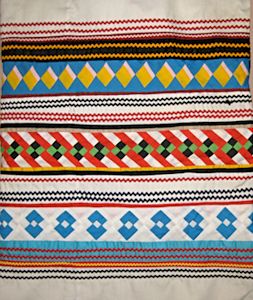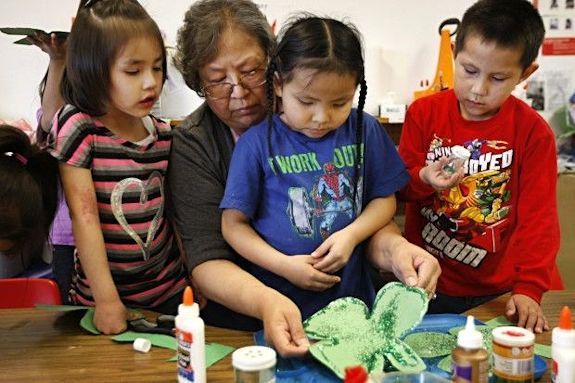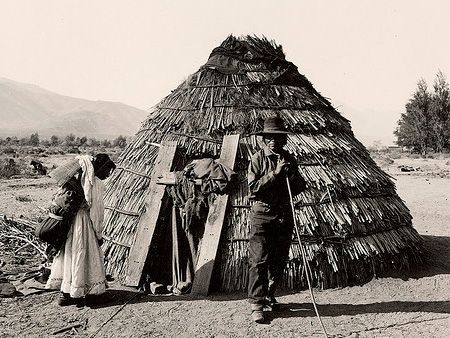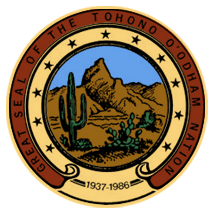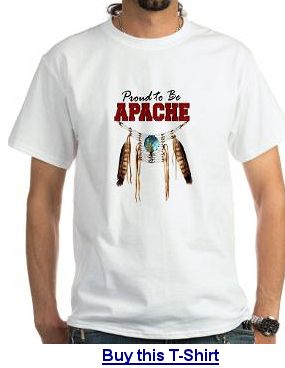The San Pasqual Band of Diegueno Mission Indians of California are one of the thirteen bands that originally made up the Kumeyaay Nation of California.
US Tribes A to Z (Federally Recognized)
US Tribes A-Z
Indigenous peoples in what is now the contiguous United States are commonly called “American Indians”, or just “Indians” domestically, but are also often referred to as “Native Americans”. In Alaska, indigenous peoples, which include Native Americans, Yupik and Inupiat Eskimos, and Aleuts, are referred to collectively as Alaska Natives.
Native Americans and Alaska Natives make up 2 percent of the U.S. population, with more than 6 million people identifying themselves as such, although only 1.8 million are recognized as registered tribal members. Tribes have established their own rules for membership, some of which are increasingly exclusive. More people have unrecognized Native American ancestry together with other ethnic groups. A minority of U.S. Native Americans live in land units called Indian reservations. Some southwestern U.S. tribes, such as the Yaqui and Apache, have registered tribal communities in Northern Mexico. Similarly, some northern bands of Blackfoot reside in southern Alberta, Canada, in addition to within US borders.
A number of Kumeyaay communities may be found in Baja California del Norte.
Indian tribes are unique legal entities in the United States and are distinct political communities with extensive powers of self-government. Tribal sovereignty predates the U.S. government. Treaties, federal statutes and executive agreements over the past 200 years have established a special trust relationship between tribes and the federal government. The federal Bureau of Indian Affairs (B.I.A.) has been designated by the Secretary of the Interior as the primary agency to protect tribal interests and administer trust responsibilities.
Federal Tribes (F)
Federal tribes followed by (F) have recognition by the US. Government. Recognized Indians are those who are enrolled members of tribes from whom the federal government has acknowledged treaty or statutory obligations. There are 566 federally recognized indian tribes (as of January 14, 2015).
State Tribes (S)
State tribes marked with an (S) have recognition at the state level, but may or may not have federal recognition by the US Government.
Terminated Tribes (T)
During the 1950s, in a move to assimilate Native Americans into mainstream America, the U.S. government ended federal trusteeship of roughly three percent of the country’s Native American population through a process called termination. Of the terminated tribes, 62 were native to Oregon and 41 were in California. Others were in Kansas, Minnesota, Montana, Nebraska, New York, North Dakota, Utah, and Wisconsin. Even though the tone of the termination legislation was emancipation, the net effect of the policy on terminated tribes was cultural, political and economic devastation. In recent years, however, vigorous efforts have been mounted by terminated tribes to reestablish or restore the trust relationship. Terminated tribes are marked with (T).
UnRecognized Tribes (U)
Un-recognized tribes marked with (U) are historical indian tribes or people with Indian ancestry who are not recognized by either the Federal Government or any state government entity. Unrecognized Indians include those from tribes with whom federal relations have been severed by congressional action (termination) and those whose tribe has never been recognized by the federal government. They also include persons of indian ancestry who, for fear of persecution, fled or hid their Indian ancestry during the time the early Indian Rolls were being taken in the mid to late 1800s and early 1900s.
Petitioning Tribes (P)
Many of the Terminated Tribes and Unrecognized tribes are today petitioning to again be recognized as tribal governments with sovereign nation status or to be included in tribes they were previously terminated from. Those petitioning tribes are marked with a (P), where known. Inclusion on this site does NOT mean an endorsement has been made for recognition of any particular tribe. All entities claiming to be US indian tribes that we are aware of have been included for completeness. Where known, we have indicated official tribal status with our Key Chart. In many cases we have not verified the validity of the claim of tribal status, and leave it to your own common sense or further research to validate tribal claims.Alternate names in parenthesis are either older names that were once used to identify that tribe, shortened common names, or they are misspellings.
Most Recent Articles:
Brief Summary:
The Santa Ynez Band of Chumash Mission Indians is a federally recognized tribe of Chumash Indians native to California.
Santee Sioux Nation
22 ViewsBrief Summary:
Sauk-Suiattle Indian Tribe
22 ViewsBrief Summary:
Ancestors of the Sault Ste. Marie Tribe of Chippewa Indians were Anishinaabeg fishing tribes whose settlements dotted the upper Great Lakes around Lake Superior, Lake Michigan and Lake Huron, throughout the St. Marys River system and the Straits of Mackinac. Anishnaabeg legends recall the ice packs breaking on Lake Nipissing and archeologists have found Anishinaabeg sites from 3000 B.C. Legends speak of immigrations to and from the Great Lakes over the centuries.
The Scotts Valley Band of Pomo Indians of California is a federally recognized tribe of Pomo and Wailaki Indians in Lake County, Callifornia.
Seminole Nation of Oklahoma
22 ViewsBrief Summary:
Seminole Tribe of Florida
22 ViewsThe Seminoles of Florida call themselves the “Unconquered People,” descendants of just 300 Indians who managed to elude capture by the U.S. army in the 19th century.
Seneca Nation of Indians
22 ViewsThe Seneca Nation of Indians is mostly Seneca Indians, but also has a few Cayuga members.
Seneca-Cayuga Nation
22 ViewsThe Seneca-Cayuga Nation is a federally recognized tribe composed of mainly Seneca and Cayuga people, but also includes a few Tuscarora descendants.
Brief Summary:
Brief Summary:
Maidu, Miwok
The members of the Shoalwater Bay Indian Tribe of the Shoalwater Bay Indian Reservation in southwestern Washington are descendants of the Willapa Chinook, Lower Chehalis, and Willapa Hills tribes.
The Shoshone Tribe of the Wind River Reservation shares this reservation with the Arapaho. Eastern Shoshone people belong to the Uto-Aztecan linguistic family, which once stretched from the Cascades in the northwest, to the northern plains of Wyoming, and southward to Mexico. Except for the Washos of California, this linguistic group included all the Indians in the Great Basin Area, including the Shoshonis, the Paiutes, the Bannocks, the Commanches and the Utes.
Today the Bannock Tribe shares the Fort Hall Reservation in Idaho with the Shoshone Tribe. Collectively, they are a federally recognized indian tribe that once was two separate tribes, now known as the Shoshone-Bannock Tribes of the Fort Hall Reservation.
The Sisseton–Wahpeton Oyate are two combined bands and two sub-divisions of the Isanti or Santee Dakota (Sioux) people located on the Lake Traverse Reservation in northeast South Dakota.
Skokomish Indian Tribe
22 ViewsBrief Summary:
Brief Summary:
Tolowa Dee-ni’ Nation
22 ViewsThe Tolowa Dee-ni’ Nation, previously known as Smith River Rancheria is a federally recognized tribe of Tolowa people in Del Norte County, California. Some Chetco and Yurok people are also members of this tribe.
Snoqualmie Indian Tribe
22 ViewsSummary
Soboba Band of Luiseno Indians
22 ViewsBrief Summary:
Sokaogon Chippewa Community
22 ViewsThe Mole Lake Chippewa are now known as the Sokaogon Chippewa Community. They are a federally recognized tribe in Wisconsin.
The Mouache and Caputa bands comprise the Southern Ute Tribe and are headquartered at Ignacio, Colorado.
Spirit Lake Tribe
22 ViewsThe Spirit Lake Tribe (formerly Devils Lake Sioux) is a federally recognized Sisseton Wahpeton tribe based on a reservation located in east-central North Dakota on the southern shores of Devils Lake.
Spokane Indians lived along the Spokane River in three bands known as the Upper, Middle and Lower Spokane Indians . They fished the Spokane River and used the grand Spokane Falls as a gathering place, as well as roaming 3 million acres in the Plateau Culture Region.
The Squaxin Island Tribe of the Squaxin Island Reservation is made up of several Lushootseed clans living along several inlets of southern Puget Sound in Washington state, including the Noo-Seh-Chatl of Henderson Inlet, Steh Chass of Budd Inlet, Squi-Aitl of Eld Inlet, Sawamish/T’Peeksin of Totten Inlet, Sa-Heh-Wa-Mish of Hammersley Inlet, Squawksin of Case Inlet and S’Hotle-Ma-Mish of Carr Inlet.
The Dakota and Nakota people of Standing Rock include the Upper Yanktonai (in their language called Ihanktonwana, which translates to “little end villages”) and Yanktonai from the Cut Head Band. The Cut Heads, whose name is literally translated, get their title from the fact that when they withdrew from the Yanktonais, there was a row over the secession and a fight ensued. Their leader sustained a scalp wound and the name Cut Head was given. The Yankton and Yanktonais are called the Wiceyala or Middle Sioux.
Stockbridge Munsee Community
21 ViewsThe Stockbridge-Munsee Community is a federally recognized Indian tribe. They are descended from Algonkian-speaking Indians, primarily Mohicans (also spelled Mahican or Mahikan, but not to be confused with the Mohegan Tribe of Connecticut) and Munsee Delawares, who migrated from New York, Pennsylvania, and New England to Wisconsin in the 1820s and 1830s. The Stockbridge originally lived in western Massachusetts and moved to north central New York between 1783 and 1786 to form a new Christian community near the Oneida. Hendrick Aupaumut, a Stockbridge sachem (leader), later chose to relocate the Stockbridge-Munsee to Indiana where they settled near the Miami tribe.
Brief Summary:
Summit Lake Paiute Tribe of Nevada
24 ViewsThe Summit Lake Tribe are Northern Paiute peoples. The Summit Lake Reservation is the most remote Indian reservation in Nevada.
The Suquamish are a Lushootseed (Puget Salish) speaking people that traditionally lived along the Kitsap Peninsula, including Bainbridge and Blake Islands, across Puget Sound from present Seattle.
Susanville Indian Rancheria
22 ViewsSusanville Indian Rancheria is a federally recognized tribe of Washoe, Achomawi (Pit River), Mountain Maidu, Northern Paiute, and Atsugewi (Pit River) Indians.
Swinomish Indian Tribal Community
22 ViewsBrief Summary:
Sycuan Band of the Kumeyaay Nation
22 ViewsBrief Summary:
Table Mountain Rancheria is a federally recognized tribe of Native American people from the Chukchansi band of Yokuts and the Monache tribe.
The Te-Moak Tribe of Western Shoshone Indians are a confederation of Western Shoshone bands, each living in an Indian Colony located in Nevada. The tribe consists of the Battle Mountain Band, Elko Band, South Fork Band, and the Wells Band.
Thlopthlocco Tribal Town
22 ViewsThlopthlocco Tribal Town is both the name of a federally recognized Native American tribe and a traditional township of Muscogee Creek Indians that was located in what is now the state of Alabama. Most of the Muscogee Creek people were relocated to Oklahoma by force. Those that remained in Florida are known today as the Seminole Tribe.
The Three Affiliated Tribes of the Fort Berthold Reservation are the remnants of the Arikara, Hidatsa, and Mandan tribes. They still maintain separate ceremonies, clan systems, and bands and maintain their separate cultural identities, but share a political alliance as one modern tribe.
Tohono O’odham Nation of Arizona
22 ViewsThe Tohono O’odham people live on one of the four separate pieces of land that make up the federally recognized Tohono O’odham Nation of Arizona. There are also Tohono O’odham who live in Mexico.
Tonawanda Band of Seneca
24 ViewsThe Tonawanda Band of Seneca are a federally recognized band of Seneca Indians residing in the state of New York. They split from the main body of Seneca to form their own Band over disagreements with the terms of 1838 Treaty of Buffalo Creek.
Tonkawa Tribe of Indians of Oklahoma
22 ViewsDue to loyalty of the Tonkawa Indians to the Confederacy during the American Civil War, pro-Union tribes fought against them in 1862 in a battle known as the Tonkawa Massacre, killing 133 of the remaining 309 Tonkawa. The surviving Tonkawa were removed to Indian Territory near present-day Kay County, Oklahoma, and are now a federally recognized indian tribe.
Tonto Apache Tribe of Arizona
22 ViewsThe Tonto Apache tribe are a Western Apache tribe located in Arizona’s Rim Country. The elders of the Tonto Apache tribe are doing their very best to sustain both their language and culture by passing old customs and beliefs down to their tribe’s younger members.
The Torres-Martinez Desert Cahuilla Indians are a federally recognized tribe of Cahuilla and Chemehuevi Indians. They are one of the tribes also known as Mission Indians.
The Tule River Indian Tribe of the Tule River Reservation is a federally recognized tribe made up of Yokuts, about 200 Yowlumne, Wukchumnis band of Yokuts, Western Mono and Tübatulabal people. The nearest town to the reservation is East Porterville and/or Springville, California.
Tulalip Tribes of Washington
22 ViewsThe Tulalip Tribes of Washington is a federally recognized tribe of South and Central Coast Salish peoples of the Pacific Northwest Coast. They include Duwamish, Samish, Skagit, Snohomish, Snoqualmie, Stillaguamish and Suiattle peoples.
Tunica-Biloxi Indian Tribe
22 ViewsThe Tunica-Biloxi Tribe is one of four federally recognized Native American tribes in the state of Louisiana. The tribal members are primarily Tunica and Biloxi Indians. Descendants of Ofo (Siouan-speakers), Avoyel (a Natchez people), and Mississippi Choctaw (Muskogean) are also enrolled in the tribe. Although, technically the ancestry of members is often mixed through intermarriages, tribal members identify either as Tunica, Biloxi or Biloxi-Choctaw.
The Tuolumne Band of Me-Wuk Indians is a federally recognized tribe of Yokuts and Sierra Miwok people from California.
The Turtle Mountain Band of Chippewa Indians (Mikinaakwajiw-ininiwag) is a Native American tribe of Ojibwa and Métis peoples, based on the Turtle Mountain Indian Reservation in Belcourt, North Dakota. The tribe has approximately 30,100 enrolled members (as of the 2000 census).It is federally recognized.
